Google, the company, doesn't require any special introduction since it's one of the world's most well-known tech companies. It shouldn't be surprising that many aspiring developers, analysts, engineers, and other professionals today would like to work for Google and join a team powering the modern IT world.
But landing a job at Google is more challenging than getting into Harvard, which has an 0.67% acceptance rate. Thus, a candidate must have in-depth knowledge about the interview process to achieve the goal of working at Google. To get your career started at Google, MindMajix subject matter experts have compiled a list of top Google interview Questions and answers that will help you with the interview process.
Google Interview Questions - Table Of Content
Top 10 Frequently Asked Google Interview Questions
- How can you combine Data Frames in Python?
- Why do we use ternary operators in Python?
- What are the main advantages of JSON over XML?
- State the differences between constructors and destructors.
- What are the merits of Google BigQuery?
- Briefly describe GCP storage.
- What is the role of the debugger in JavaScript?
- Briefly describe WeakSet in JavaScript.
- Differentiate: Linked List and Array
- What is the difference between Underfitting and Overfitting?
Google Interview Process
1. Recruiter Connect:
The recruiter may contact a candidate if any of the candidate's friends or contacts have suggested the candidate to the company. You need to connect with recruiters on LinkedIn and submit an application for jobs via Google's Career page. If applicants have great DS and Algo abilities, they should participate in Google Kickstart, which is Google's six-times-a-year employment competition. Recruiters will contact you immediately if you perform well in those events.
| If you want to enrich your career in Google, then visit Mindmajix - a global online training platform: "Google Cloud Training" This course will help you to achieve excellence in this domain. |
2. Interview Rounds:
- Telephonic Interviews (Includes two rounds):
During these two 45-minute phone interviews, the interviewer first shares a Google Doc with the applicant and poses a medium challenge or two simple problems in algorithms and distributed systems. Before coding the problem on Google Docs during the interview, it is anticipated that the candidate must describe the problem's solution to the interviewer first.
- Algo DS Interviews (Three or Four Rounds):
These 45-minute interviews consist of Medium to Hard tasks involving algorithms and DS that the interviewer shares with the candidate in a Google Doc.
- Googliness Interviews (One Round):
The behavioral interview mainly focuses on whether a candidate would fit in with the company's culture.
3. After Interviews:
The recruiter will contact you with feedback following the interview process if your performance is good and the interviews go well and will send your profile to the various Google teams for the team matching phase. During the team matching stage, the team will come to understand your working style and your interests, and you will be able to understand their demands and the team's work expectations.
4. Hired:
The recruiter will share the offer letter and announce your hiring once you and the team are ready to begin.
Google Technical Interview Questions
Google Python Interview Questions
1. What exactly is PEP-8 in Python?
PEP-8 refers to the Python Enhancement Proposal. It is a set of instructions that streamline formatting Python codes. In other words, it is a set of guidelines that help developers how to write Python codes. Also, it provides the best practices for writing robust Python codes.
We can develop Python codes with good consistency and readability following these guidelines. Besides, we can learn how to make naming conventions, code layouts, indentation, comments, whitespaces, etc.
2. What do you mean by Python Namespaces?
In Python programming, a namespace represents a name assigned to an object. The address and namespace are created instantly whenever an object is created in Python codes.
Python comes with four types of namespaces as follows
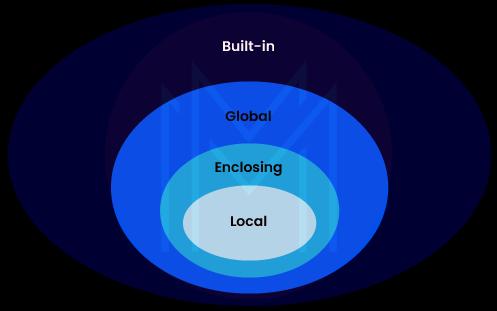
3. Mention the different built-in data types of Python.
Following are the different built-in data types of Python.
- Numbers: This data type includes floating point numbers, integers, and complex numbers
- Boolean: This data type has only two items – true or false.
- String: This data type has a sequence of characters. Every string comes with a single quote or double quote.
| Related Article: Python Tutorial |
4. List the various built-in Python Modules.
A Python Module is nothing but a file that contains executable Python codes. The codes can be variables or functions.
Following are a few built-in Python Modules.
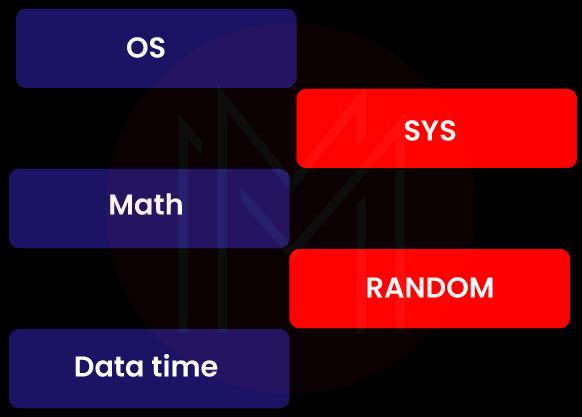
5. Briefly describe Local and Global Variables in Python.
- A local variable is nothing but a variable declared inside a function of a Python program. Also, this variable only exists in a local space.
- A global variable is another variable declared outside of a function. It means that it is declared in the global space. So any function in the Python program can access the global variable.
6. How can you combine data frames in Python?
We can combine data frames in Python in the following ways.
- By Stacking two data frames vertically
- By combining the data frames in a single column.
- By horizontally Stacking two data frames
7. Is it essential to make Indents in Python?
Yes. It is crucial to make indents in Python. An indented block in Python consists of codes for loops, functions, classes, etc. We cannot execute the codes properly if we don't indent codes. And it will throw errors.
8. Why is not the entire memory freed up when a Python Program quits?
Below are the reasons why the entire memory is not freed up when a Python program exits.
- Python modules that have circular references to other objects that are not freed up yet.
- We cannot free up the memory reserved by the C library.
- The objects referenced with global namespaces are also not freed up.
9. How can you randomize the data items in a list?
We can randomize data items in a list using the following codes.
Code:
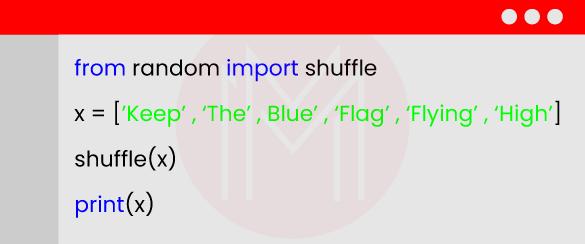
Result:

10. Why do we use Ternary Operators in Python?
We use ternary operators to determine whether the given condition is true or false. Based on the true or false status of the condition, the direction of program flow execution is decided. The main thing about the ternary operator is that it is more concise than if-else statements. Simply put, a single line of code is enough to use the ternary operator.
Below is the syntax of the Ternary Operator.

Further, we can use ternary operators with lists, tuples, and lambda functions. Ternary operators allow nesting as well.
Google Java Interview Questions
11. List down the Salient Features of Java.
The following are the salient features of Java.
- It is an object-oriented language.
- It is platform-independent.
- It is an interpreted language.
- It is highly portable.
- It has robust memory management.
| Related Article: Java Tutorial |
12. What are the main advantages of JSON over XML?
Here are the main advantages of JSON over XML.
- JSON is lighter than XML
- It uses arrays, unlike XML
- It doesn’t use end tags
- It is easier to read than XML
- It is faster than XML
- The learning curve is low for JSON. But it is steep for XML.
- JSON codes are shorter than XML. It means that JSON uses fewer characters than XML.
- JSON supports many data types, whereas XML only supports string data types.
13. State the different Constructors used in Java.
Below are the two types of constructors used in Java.
- Default constructor: This constructor is also known as a non-parameterized constructor. It is called while creating objects.
- Parameterized Constructor: This constructor accepts arguments. Also, it initializes the instance variables.
14. Define: object cloning.
It is a process of creating a copy of an existing object. We use the clone () method to perform object cloning.
The syntax for the clone () method is given as follows:

15. What is the role of Annotations in Java?
Annotation is nothing but a tag with the methods, class metadata, etc. Annotations have no role in operations. It means that they don’t affect operations in any way. JVM and Java compilers use the information attached with annotations.
16. Compare Vector and ArrayList in Java.
| Vector | ArrayList |
| It is synchronized | It is not synchronized |
| It is slower since it is thread-safe | It is faster |
| It doubles the size when an element is inserted into an array. | If an element is inserted in an array, it increases its size by 50 percent. |
| It defines the increment size. | It doesn't specify the increment size. |
| It uses both an iterator and enumeration for traversing. | It uses an iterator for traversing |
17. Differentiate Subclass and Inner class in Java.
| Subclass | Inner class |
| It is inherited from some other class. The other class is known as the superclass. | It is a class nested within a class. |
| It allows all the protected and public methods to access its methods and variables. | It allows the nesting class to access the methods and variables of the inner class. |
| It doesn’t require any reference. | Outer class is necessary to refer to an inner class. |
| It supports performing inheritance. | It supports performing encapsulation. |
| It defines both static and non-static methods. | It doesn’t define any static method. |
18. Why is the main method of Java static?
We don’t need objects to call static methods. Otherwise, the JVM will create objects to call the non-static methods. But it will lead to allocating extra memory.
19. State the differences between constructors and destructors.
| Constructors | Destructors |
| Constructors initialize objects and allocate memory | Destructors destroy objects and free up memory |
| Constructors are called Once objects are created. | Destructors are called once Java programs are terminated. |
| They accept arguments. But sometimes, they don’t accept. | They don't take any arguments always. |
| A class may have many constructors. | A class will have a single destructor |
| Constructors can be overloaded | They cannot be overloaded |
| They are executed in successive order | They are usually implemented in reverse order |
| Copy constructors can be used to initialize an object from another object. | Copy constructors are not used. |
20. Write a Java Code to reverse a string without using the in-built function.
Program:
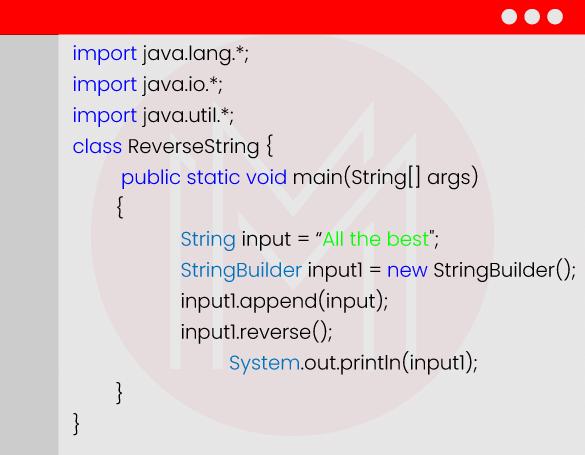
Result:

Google Cloud Interview Questions
21. What do you understand by the Google Cloud platform?
Google Cloud Platform or GCP provides high-level security to applications. It is the cloud infrastructure offered by Google. We can create, deploy, and scale applications using this cloud infrastructure. Also, it prevents clients from having their own data centers.
22. Mention the various components of the Google Cloud platform.
Below are the different components of the Google Cloud platform under various services.
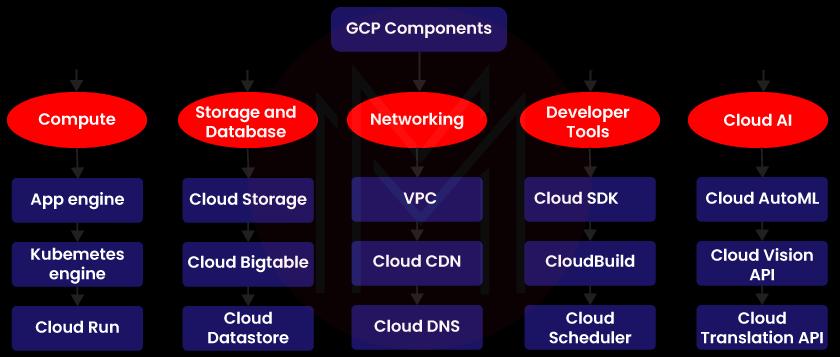
23. Outline the tools and libraries used in GCP for Cloud Storage.
Here are the tools and libraries used for the same.
- GCP console: This tool helps perform operations on objects.
- Gsutil command-line tool: It offers a command-line tool to manage cloud storage.
- Cloud storage client libraries: The libraries provide programming support for different languages
24. What is the role of Google Compute Engine?
It is one of the crucial components of the Google Cloud platform. This engine contains Windows as well as Linux-based virtual machines. The virtual machines are generally self-managed. They are also hosted on the Google infrastructure.
This engine easily integrates with other Google Cloud Platform components and helps build robust applications.
25. What are the merits of Google BigQuery?
Google BigQuery is a data warehouse where we can store massive amounts of data. Following are the key merits of Google BigQuery.
- It only allocates storage resources based on requirements.
- It doesn’t allow any downtime
- It allows storing data in different formats
- It offers excellent backup to stored data.
26. State the differences between Google App Engine and Google Compute Engine.
| Google App Engine | Google Compute Engine |
| It is a PaaS Google product | It is an IaaS Google product |
| It is a managed service | It is an unmanaged service |
| It provides power to websites | It hosts data storage systems |
| It supports building and hosting web applications. | It supports accessing networking infrastructure |
| Autoscaling is done faster | Autoscaling is done slowly. |
| It supports Python, Java, Ruby, etc. | It is compatible with any programming language. |
27. Briefly describe GCP storage.
It is a cloud-based data storage solution offered by GCP. It securely holds the data generated by users, applications, and customers. We can access the data stored in GCP storage at any time from anywhere.
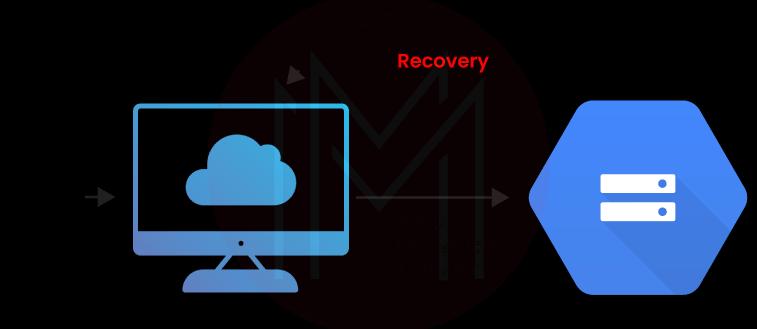
28. How do ‘projects’ on Google Cloud Work?
The projects act as containers for all Google Cloud resources. They operate independently and don’t share resources with others.
| Related Article: Google Cloud Interview Questions |
29. How is the project number different from the project ID?
The project ID is created automatically, whereas users create the project number. Project ID can be optional, but the project number is mandatory.
30. How can you migrate VMs and servers to the compute engine of the GCP?
We can use Google Cloud Migrate for compute engine to migrate virtual machines and servers.
Know that the servers and VMs might be hosted in on-premise data centers, AWS, and Azure. They can be migrated to the compute engine of GCP with the help of Google Cloud Migrate.
Google JavaScript Interview Questions
31. Distinguish Java from JavaScript.
| Java | JavaScript |
| It is an object-oriented language | It is a scripting language |
| It is a statically-typed language | It is a dynamically-typed language |
| It is slightly more complex than JavaScript | It is easier than Java |
| We can use Java to create complex applications | We can use this language to create web pages |
| Memory is consumed largely | Memory consumption is less |
| Java objects are class-based | JavaScript objects are prototype-based |
| It follows a thread-based approach when it comes to concurrency | It follows an event-based path when it comes to concurrency |
| It supports multithreading | It doesn’t support multithreading |
| It is used for backend applications | It is used for both frontend as well as backend applications |
32. How can we effectively read and write files in Java?
We can read and write files in Java using the following two methods.

33. Why do we use a callback function in JavaScript?
We use callback functions just because JavaScript actions are generally asynchronous. It means that we can’t stop a program while it is running.
The main thing about the callback function is that it runs in the background while the main program is running on the other side.
Know that we use the callback function as an argument in JavaScript. This function is considered a simple event in JavaScript. In other words, it runs codes in response to events.
34. Outline the different errors created in JavaScript.
Here are the different errors created in JavaScript.
- Runtime errors – They occur because of the misrepresentation of HTML commands.
- Logical errors – They occur because of poorly-designed code logic.
- Load time errors – They occur during web page loading. They occur because of incorrectly written syntaxes.
35. What exactly is the MUL function in JavaScript?
It is a multiplication function. Multiplication occurs between the numbers defined in the function and the value returned by another function.
36. What is the role of the debugger in JavaScript?
We use this tool to debug codes. We can switch on and off the built-in debuggers of JavaScript. So users can collect error reports whenever they need them.
37. What do you mean by implicit type coercion in JavaScript?
It converts one data type into another type automatically. This is done when an expression has two different operand data types.
Boolean coercion, String coercion, and equality coercion are examples of implicit type coercions.
38. Compare the spread operator and REST parameters.
| Spread Operator | REST Parameter |
| It spreads values in arrays. Or, it spreads a string across many arguments. | It puts values of data into a JavaScript array. |
| It is used in function calls. | It is used in the function declaration. |
39. Briefly describe WeakSet in JavaScript.
It is a collection of unique elements that are neatly ordered. There are three methods in WeakSet such as add (), has (), and delete ().
Moreover, it has only objects. If the objects are not referenced, they will be garbage collected.
40. Write a JavaScript code to rotate array elements in left-by ‘d’ positions.
Code:
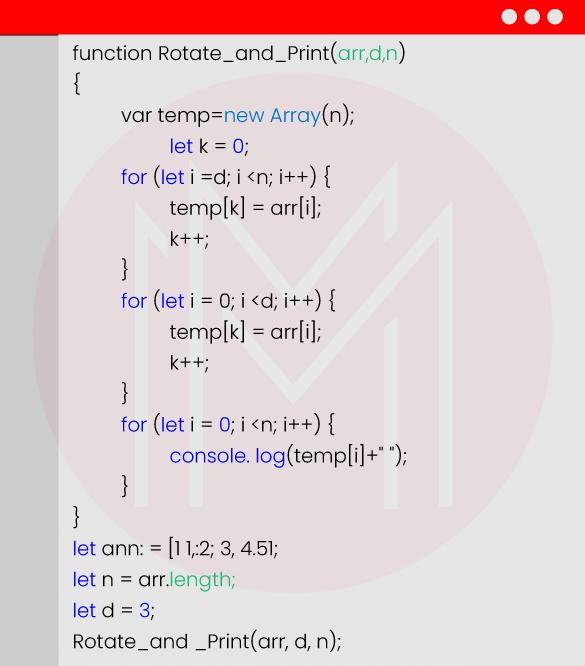
Result:
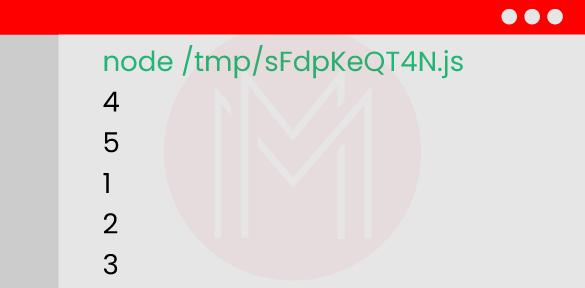
Google Data Structures and Algorithms Interview Questions
41. Explain the Data Structure.
A data structure is a format that we use to store, organize, process, and retrieve data systematically. The main thing is that both users as well as machines can understand and manipulate structured data effectively.
Know that the data structure has all the essential data details, such as values, relationships between data, and functions that can be used on the data.
The data structure is crucial in software programming since it is closely connected with algorithms. A data structure is a prime thing for algorithms to perform some basic operations on data.
| Related Article: Top Data Structures Interview Questions |
42. What is a Binary Tree?
It is a data structure type that has two nodes. In a way, a binary is the extension of a linked list.
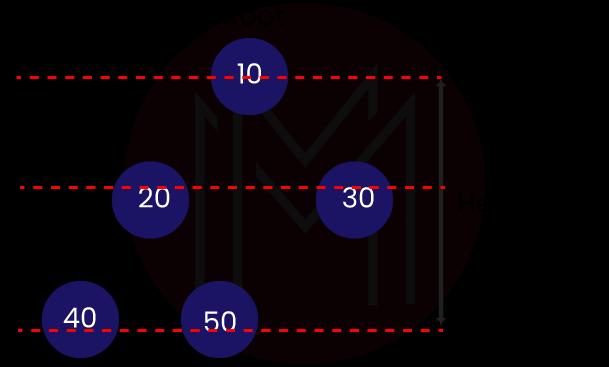
43. What do you understand by dynamic data structure?
Data structure and data can be changed easily at runtime. The dynamic data structure is the type that allows changes in its size during runtime. It means that a dynamic data structure is contracted or expanded seamlessly while running programs.
The essential thing to note here is that dynamic data structure allows changes in data and structure without affecting other operations connected with the data structure.
Following are a few examples of dynamic data structures.
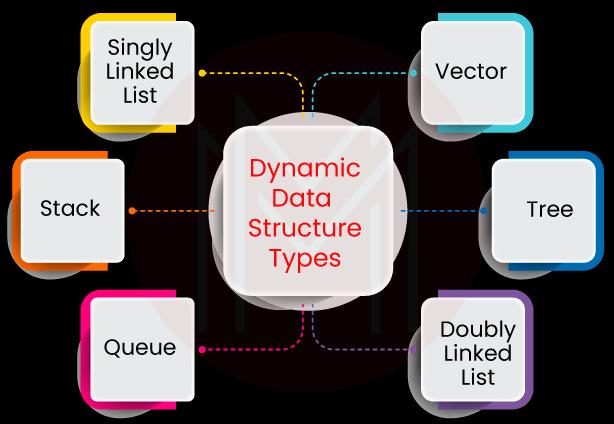
44. What data structure types can you use to implement LRU cache?
We can use hashmap as well as doubly linked list data structures to implement the LRU cache.
45. What do you mean by linear data structure?
It has data items that are sequentially ordered. Every data item is stored in a separate memory address.
List and Array are two examples of linear data structures.
46. How can we identify a loop in a linked list?
We can identify a loop in a linked list with the help of the following three methods.
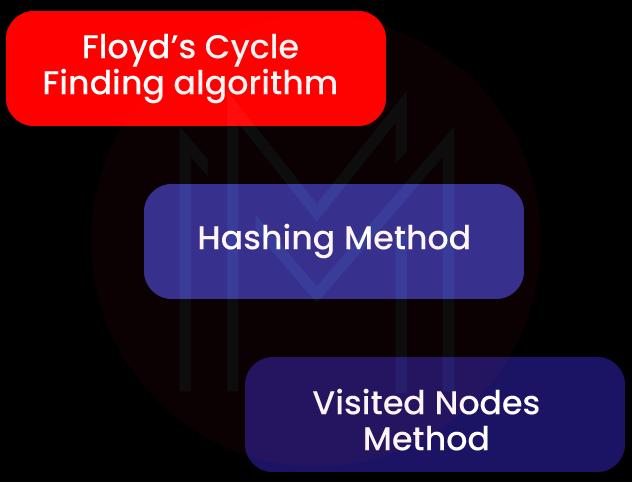
47. Differentiate: Linked List and Array
| Linked List | Array |
| It is done at runtime. | Memory allocation is done at compile time. |
| The size of a linked list will change at any time due to the addition and deletion of of new elements. | We must declare the array size. |
48. How does the quick sort algorithm work?
This algorithm works based on the divide-and-conquer approach. It uses the pivot to make partitions from a list. The list values smaller than the pivot are grouped at the left partition. The list values greater than the pivot are grouped at the right partition.
49. How many spanning trees can a graph consist of?
It depends on the connectivity of the graph. An undirected graph can have nn-1 number of spanning trees at maximum. Here ‘n’ denotes the number of nodes.
50. Create a Java program to count the number of nodes in a binary tree.
Code:
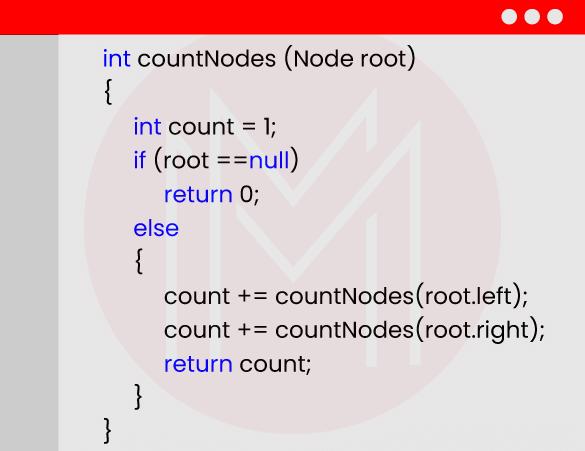
Google Data Analyst Interview Questions
51. What is Data Wrangling?
It is a process of cleaning, organizing, and enhancing the raw data into high-quality data organized data. Thus we can make informed decisions from the collected data.
The techniques such as merging, sorting, and joining are used to convert the data into usable data.
52. Compare Predictive and Descriptive analytics.
| Predictive Analytics | Descriptive Analytics |
| This analytics provides insights into what will happen in the future | The analytics offers insights into what has happened in the past |
| Forecasting and Statistical techniques are used. | Data mining and Data aggregation techniques are used. |
53. Explain Multivariate Analysis?
It is an analysis in which we analyze three or more variables. As a result, we understand the relationship of each variable with other variables. For example, analyzing revenue based on expenditure is a multivariate analysis.
We can use many tools to perform multivariate analysis, such as multiple regression, dual-axis charts, cluster analysis, etc.
54. What is the difference between Underfitting and Overfitting?
| Underfitting | Overfitting |
| It occurs when there are less data to create a model. | It occurs when the model learns random fluctuations |
| Models generate accurate results in the end but poor results at initial times. | Models don’t make accurate predictions. |
| Training errors, as well as testing errors, are significant. | Training error is small, but the testing error is significant. |
| It occurs when the model is simple for the data. | It occurs when the model is complex for the data. |
| To avoid underfitting, we must complicate the model. | To avoid overfitting, we should simplify the model. |
55. What are the steps involved in a data analysis process?
It is a process that includes gathering, processing, transforming, modeling, analyzing, and interpreting data. As a result, we can draw conclusions, make informed decisions, gain valuable insights, and so on.
We can perform data analysis as follows:
- Gather data: In this stage, data is garnered from multiple sources. The data is then cleaned and organized into the data that is ready for analysis.
- Analyze data: Once the data is transformed for analysis, analysis is done with the help of the data model.
- Build reports: Based on the analysis results, reports are generated. Not only that, but we can also get analytics, insights, and recommendations.
56. List some tools that we use for data analysis.
The following are the tools widely used for data analysis.
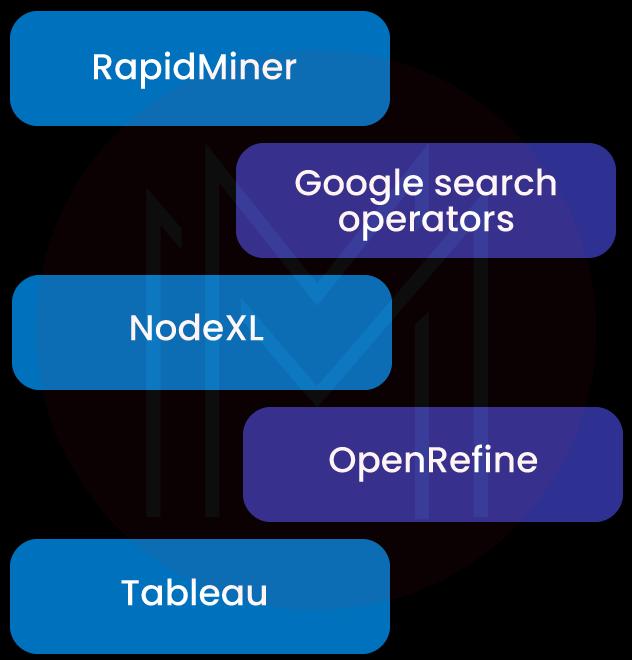
57. How does data visualization helpful to us?
We can view and infer complex data through charts and graphs with data visualization. We can track trends as well as outliers in the data. We can achieve the best from data visualization by removing noise from the input data.
58. What should be the ideal characteristic of an exemplary data model?
The ideal characteristics of an exemplary data model should be as follows:
- The data model should generate accurate analysis results
- It must scale seamlessly based on requirements
- It should be highly adaptable since business requirements change rapidly with time
- On top of all, businesses should gain something from the data model results.
59. Why is KNN used to identify missing numbers in data?
KNN is good at approximating the values closer to the missing data. That’s why we prefer using KNN to identify missing numbers in data.
60. How is data analysis different from data mining?
| Data Analysis | Data Mining |
| We can get insights by analyzing data. | We can identify hidden patterns in large datasets. |
| It includes different processes, such as data collection, processing, and modeling. And then drawing conclusions from the data. | It is one of the processes of data analysis |
| Data visualization is pivotal in inferring data analysis results. | Data visualization is optional. |
| The data may be structured, unstructured, or semi-structured. | Data is usually structured. |
| A dataset can be small, medium, or large. | A dataset can be significant. |
Best Questions to Ask At the End of an Interview
When you've finished your interview with Google, you have the chance to ask any questions to the company. You may show interest, commitment, and engagement by asking them some well-thought-out questions. It would be a bad idea to say "no" in this situation.
Here are a few examples to ask
- What might an average day look like for someone in my role?
- What would success mean in the position I'm interviewing for?
- What do you like most about your job at Google?
- What is the most challenging part of this job?
Google Leadership Principles
Google's Leadership Principles include the following:
- Be a good coach.
- Without micromanaging, empower a team.
- Make your team inclusive and show that you care about their performance and well-being.
- Be productive and goal-oriented.
- Be effective at communicating.
- Encourage professional growth and talk about the output.
- Clearly define the team's vision and strategy.
- Possess critical technical skills to help the team.
- Be a strong decision-maker.
Tips to Crack Google Interview
Following are a few tips that will help you properly prepare for an interview.
- Create connections between the job description and your resume.
Please read the job description and your resume once more to help connect the dots between them. What ties them together? We urge you to seize every opportunity to set yourself up for success.
- Focus on data
Remember to include statistics when you think about the points you want to emphasize in your interview. If you disclose this, your interviewer will better understand your overall achievements and the scope of your impact.
- Know Google's work culture ins and out.
Knowing how Google operates and what is expected of its employees is always a good idea. This makes the best impression on the interviewer and demonstrates your interest in working at Google.
- Be Thorough with Data Structures and Algorithms
Google is constantly seeking individuals with strong problem-solving skills. The best way to impress the interviewers is to show that you are committed to developing logic structures and finding solutions to algorithmic problems.
- Come ready with questions.
This demonstrates your dedication to researching the company, your desire to learn about Google and the position you're applying for. You have the opportunity to interview both of us as well.
FAQs
1. How do I prepare for a Google interview?
You may encounter the following technical questions at a Google interview.
- System design questions.
- Coding interview challenge.
- General analysis questions.
So, there are several concepts that you should master or practice before attending a Google interview. Sorting, data structures, graphs, recursion, object-oriented programming, KPIs, etc., are all one needs to be precise.
2. Are Google interviews difficult?
The difficulty of the interview will depend on how much effort you put into preparing. The questions commonly asked during a Google interview range from Easy to Medium Level, but this can change from person to person. It can sometimes be nerve-wracking for a candidate because there could be four to seven rounds of interviews. Nonetheless, if you are interested, the work will be worthwhile.
3. What are the five rounds of Google interviews?
There are five main rounds of Google Interviews:
- Resume screening
- Phone screenings
- On-site interviews
- Hiring committee reviews
- Executive reviews.
4. Is it possible to crack Google interview?
Every software engineer wishes to get through Google's coding interview. It takes effort and planning to succeed in this interview, which is the ultimate test of your technical expertise. Fortunately, Google is quite open with job candidates about what they want. The more you understand Google's procedures and culture, the higher your chances of success.
5. What happens if you fail Google interview?
You can still apply if you fail an interview with Google. Google suggests that job seekers take their time, get better prepared, gain more experience, and then reapply to Google for the position they're seeking.
6. Is it easy to get hired at Google?
Getting a job at Google can be challenging due to the intense competition and complicated hiring process. You might be the one if you possess the necessary charm and skill set to join the most creative team.
7. Can we apply for multiple roles at a time?
Yes, you can apply for any job that fits your skills and interests. We are evaluated per the requirements for each role and can give interviews for several opportunities simultaneously. However, applicants should be aware that they are limited to three Google job applications per 30-day period.
8. What is the hire rate for Google?
Despite taking on about 20,000 new employees each year, Google only accepts 0.67% of the more than 3 million applications it receives yearly. Statistics show that it is easier to get into Harvard than it is to gain a job at a multinational company.
9. How to crack a Google PM interview?
Follow the below steps to crack Google's Product Manager position:
- Be Data-Focused and Data-Centric
- Reflect on Your Previous Product Management Roles.
- Prepare Questions For Your Interviewer Beforehand.
- Attend Peer-to-Peer Mock Interviews.
- Consult Product Management Interview Coaches before the big day.
10. How to prepare for Googliness Round Questions?
A Googleyness interview aims to assess your personality and cultural fit. With the proper preparation, you can successfully address all the Google behavioral and leadership interview questions.
Conclusion
This brings us to the conclusion of the Google Interview Questions blog. You should note that this collection of questions includes both open-ended and predetermined questions. Please focus on the questions we've specifically designed to fit your background and the job you're applying for. The interview questions posed at Google are highly challenging. So utilize them max to prepare for your upcoming job interview with the company.
If you want to sharpen your Google skills, we recommend checking out MindMajix's Google Cloud Training.
Feel free to leave any questions or doubts in the comments section below, and we'll respond soon.
 On-Job Support Service
On-Job Support Service
Online Work Support for your on-job roles.

Our work-support plans provide precise options as per your project tasks. Whether you are a newbie or an experienced professional seeking assistance in completing project tasks, we are here with the following plans to meet your custom needs:
- Pay Per Hour
- Pay Per Week
- Monthly
| Name | Dates | |
|---|---|---|
| Google Cloud Training | Dec 27 to Jan 11 | View Details |
| Google Cloud Training | Dec 30 to Jan 14 | View Details |
| Google Cloud Training | Jan 03 to Jan 18 | View Details |
| Google Cloud Training | Jan 06 to Jan 21 | View Details |

Madhuri is a Senior Content Creator at MindMajix. She has written about a range of different topics on various technologies, which include, Splunk, Tensorflow, Selenium, and CEH. She spends most of her time researching on technology, and startups. Connect with her via LinkedIn and Twitter .
















